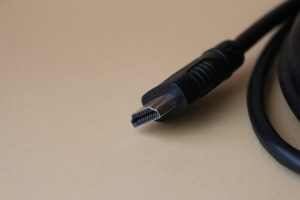
High-Definition Multimedia Interface (HDMI) ports are commonly found on display devices. Whether you’re buying a computer monitor or a TV, it will likely have one or more HDMI ports. In the past, display devices often featured red, green and blue (RGB) ports. These RGB ports, however, have since become obsolete with the introduction of HDMI. What are the benefits of HDMI for display devices exactly?
Supports 4K Resolution
HDMI cables are capable of transferring video data in 4K resolution. Also known as Ultra-High Definition (UHD), 4K resolution is characterized by the use of 4,000 pixels per any given image.
Several things need to happen in order for a display device to produce 4K images such as this. First, the source must be 4K. Second, the cable connecting the source to the display device must support 4k. Fortunately, HDMI cables support 4K. You can use them to connect to a display device to a 4K source, such as a computer or cable box, resulting in 4K images being produced.
Eliminates the Need for a Separate Audio Cable
You won’t have to worry about using a separate audio cable with an HDMI-connected display device. HDMI cables don’t just transfer video data; they transfer audio data as well.
Other types of display cables may or may not support audio data. Many of them, in fact, only support video data. Therefore, you’ll have to use them in conjunction with a separate audio cable. Rather than a single cable, you’ll have to connect the display device with two cables. HDMI eliminates the need for a separate audio cable because it’s able to transfer both video and audio data.
Protection From Damage
HDMI cables offer a high level of protection from damage. All display, as well as audio, cables can break. Damage typically occurs at the connectors where the ends of a given cable connect to a source and a display device.
Thanks to their design, HDMI cables typically won’t break. The connectors are small and feature just 16 pins. This design makes them protected from damage. Choosing HDMI cables with which to connect a display device will minimize the risk of damage, which could otherwise force you to buy a new cable.
HDMI cables, of course, are universally accepted. Most display devices that support video and audio data from an external source features one or more HDMI ports. You can use an HDMI cable to connect them to a source. HDMI supports 4K resolution, eliminates the need for a separate audio cable and offers a high level of protection from damage.
